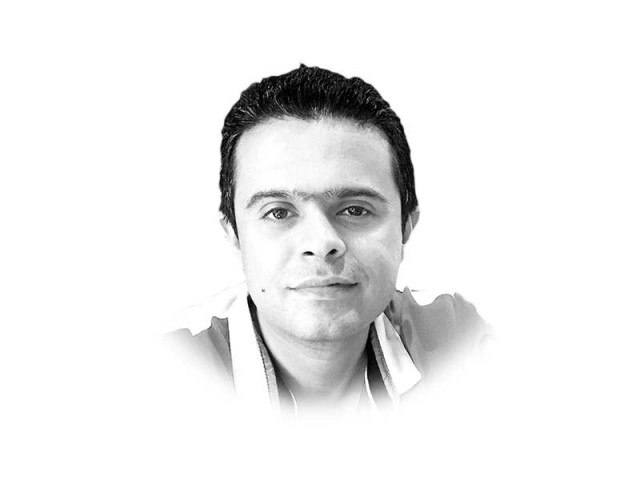The future of 46 new hospitals
Even after operationalisation, managing these facilities on a sustainable basis is another challenge

The writer is an international development professional, based in Islamabad
This is however easier said than done. According to the Human Development Index 2014, life expectancy at birth in Pakistan stands merely at 66.2 years, as opposed to 68 for India, 71.6 for Bangladesh and 74.9 years for Sri Lanka and has witnessed only marginal improvement in the last decade. Public health expenditure in Pakistan is only 2.8 per cent of GDP, while India, Bangladesh and Sri Lanka are spending 4 per cent, 3.7 per cent and 3.2 per cent of their GDPs, respectively. Considering this dismal situation, a focus on improving public healthcare system is critically needed. Nevertheless, before embarking on this ambitious project, the core issues surrounding this challenge must be duly considered and addressed.
The first aspect that needs special attention is project design. A wide chain of public healthcare facilities including basic health units, rural health centres, dispensaries and tehsil, district and tertiary care hospitals already exist. With this extensive network present, it must be made clear how these new hospitals would not form yet another layer of sub-optimally managed public facilities. More importantly, it is not yet clear how the federal government is planning to carve its role in public healthcare, when after the 18th Amendment; it is an exclusively provincial subject. Although a request has already been made to provincial governments for provision of land for hospital sites, it is unclear how the provinces are going to react, especially K-P and Sindh, which may argue against it.
The second aspect that needs consideration is the management approach and the ambitious 2018 deadline. The brick-and-mortar part may be easier, especially knowing incumbent government’s credentials to complete infrastructure projects in record time, but how these facilities are going to be made functional poses the most significant challenge. Hospitals in smaller cities are always scarce of specialist doctors and despite improvement in incentive package in at least one of the provinces; there has been little success in attracting requisite talent. If the government plans to entice doctors with even bigger pay cheques, this may cannibalise the talent available in existing facilities.
Even after operationalisation, managing these facilities on a sustainable basis is another challenge. It is unclear if the federal government will run these facilities directly or the provinces would be asked to take them over. Notwithstanding it is difficult to expect any significant deviation from the existing situation. It is quite common for TV channels to air reports highlighting non-functioning CT scan machines, ventilators, or other critical equipment, non-availability of doctors due to strikes or negligence by staff. Even the ones that are functioning slightly better are overburdened by patients’ inflow. An emergency bed being shared by many patients simultaneously is a common sight in public hospitals. Building fancy infrastructure and procuring state-of-the-art machines and equipment therefore would not translate into quality services by itself.
Lastly and most importantly, how do these new hospitals fit into the overall national vision of public healthcare? Looking at the number of public health facilities, it is clear that the issue is not of fewer hospitals and rather of dearth of quality and reliable healthcare services, with poor primary healthcare creating an additional burden on existing hospitals. Moreover, even the best of tertiary care hospitals in public sector do not offer expertise in all relevant areas and when faced with complicated cases, these often result in negligence. It is essential to work out a solution to provide wide-ranging medical expertise at least at a few locations.
These challenges by no means should discourage this newfound focus on healthcare. If the government is fully committed to undertaking this project and make its mark in improving healthcare service delivery to citizens, it should do so with meticulous planning and on a solid foundation. The project should be initiated through consultation with provinces and possibly implemented as a special grant for provinces, over and above the NFC share. Provinces are not likely to decline such a grant, merely because of political differences.
In order to make a quick impact, the project should also avoid Greenfield projects and rather select existing facilities such as DHQs, which can be immediately upgraded through injection of funds and provision of state-of-the-art equipment. The expansion of premises can take place simultaneously and this would provide due time to the government to think through issues such as incentive for doctors and putting in place robust systems to actually improve services.
These individual hospitals should then be supplemented with establishment of at least four healthcare clusters, one for each province, with a number of centres of excellence. The only comprehensive healthcare clusters in Pakistan exist within the armed forces, with a network of specialised healthcare facilities in Rawalpindi and Lahore. A similar approach can also be adopted for this project.
Availability of specialist doctors may be the hardest challenge, but the key would be to resolve the issue of private practice and institutionalising it, as is done in military hospitals. Public-private partnerships should also be explored and renowned national and international hospitals can be invited to run these new facilities, with a single line grant given to deliver the desired health outcomes. The government should also link these hospitals with the national health insurance scheme.
Most importantly, these future hospitals should form part of a holistic vision for the sector. Such a vision should be articulated as a policy document, putting this scheme as a first step and committing to future actions for the next electoral term. While a success in making 46 state-of-the-art hospitals is going to get a lot of popular vote to the incumbent government, the same effort can also result in a reputational damage if not done with utmost care and meticulous planning.
Published in The Express Tribune, October 14th, 2016.
Like Opinion & Editorial on Facebook, follow @ETOpEd on Twitter to receive all updates on all our daily pieces.















COMMENTS
Comments are moderated and generally will be posted if they are on-topic and not abusive.
For more information, please see our Comments FAQ